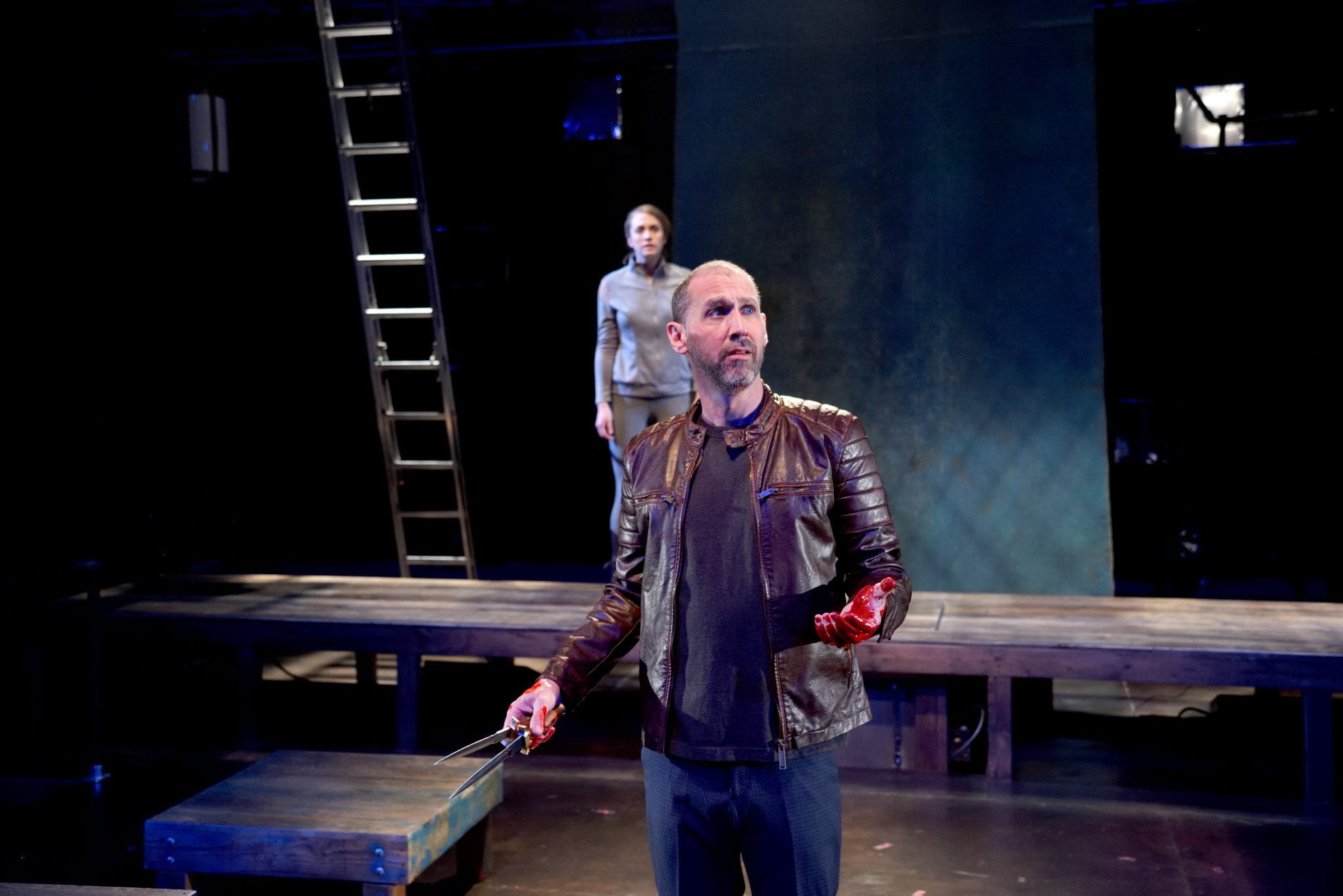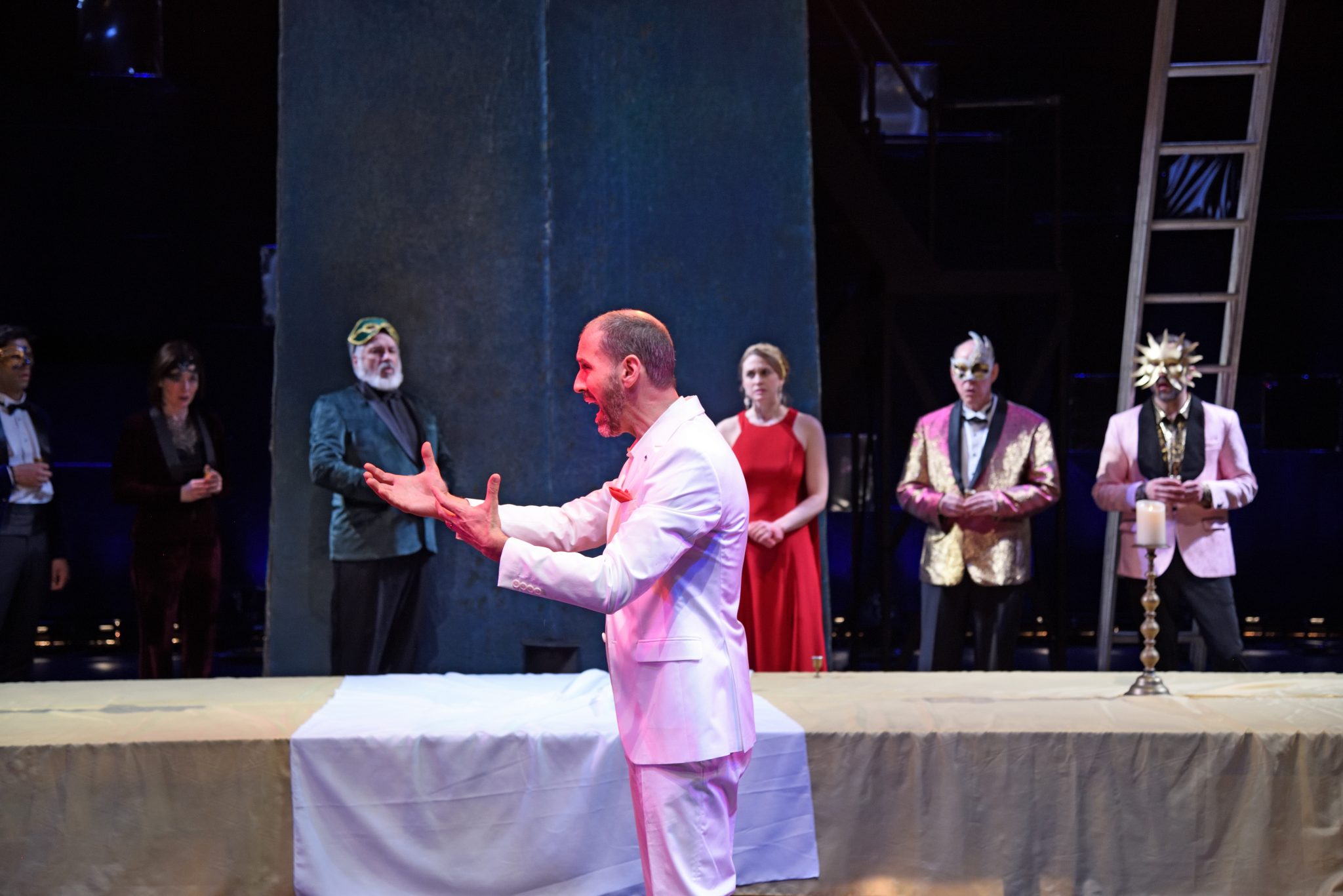2/19/19
Decapitation in Macbeth is a sign of the times. By Talley Murphy.
From the early 1300s until 1660, heads lined the London Bridge. The tar-covered skulls of executed traitors were placed on spikes — a warning to anyone considering double-crossing the king or queen. Families of the executed were often desperate to reunite head with body to avoid spiritual damnation. The soul slipped out when the head was severed.
To get to the Globe Theatre from downtown London, you cross the bridge — it takes about five minutes. By the time Macbeth was first performed in 1606, around 30 heads were on display at any one time.
At the start of the 17th century, decapitation was mechanized. Instead of hiring talented (or not-so-talented) swordsmen, royal courts employed an early guillotine. The removal of the head from the body — the slipping of the soul — became a technological process. Cleanly, efficiently, traitors were beheaded. Punishment was swift. The executioner would often display the head to the crowd in triumph. Occasionally, the traitor’s head would try to speak. Even in mechanization, the soul can’t be evacuated instantly.

Death in Macbeth is anything but mechanized, and souls stick around. The play is bloody and uneven; civilians die alongside soldiers, children beside their parents. The warring bodies of Macbeth are excessive and awful. In death, as the soul and the body separate, the soul returns not through the twitching jaws of England’s executed, but as full beings, sensing, acting, affecting.
But while the dead come back in Macbeth, the decapitated seem to stay where they are. It is death with the promise of a soul removed.
The play begins with a beheading, one the witches have prophesied. As the sergeant reports, “he unseam’d him from the nave to the chaps, / And fix’d his head upon our battlements” (I.II). The head, fix’d like those along the bridge, is an indirect exercise of the king’s power, and a sign of all to come.

When Macbeth loses his head, it is presented to the new king for his approval (“behold, where stands / The usurper’s cursed head,” V.VIII). In order to secure the throne, his enemy’s head needs to be raised to the crowd so that everyone can confirm for themselves his death. Without the decapitation and its proof, the location of power becomes murky.
Our contemporary condition is disembodied. We have, effectively, lost our heads. Power regulates and stills our bodies; digital technologies move our consciousnesses beyond borders. Macbeth takes up the challenge of today’s political world: how can we resolve the distance between our bodies and our minds? How can we find our spirits? We too are caught up in systems of control and futurity, and the severed head that ends the show is a warning to us, even as it stabilizes the world of the play. We are a lot more like Macbeth than the new king.
Macbeth was first presented at Hampton Court Palace, a site of carnage during Tudor rule. Henry VIII conducted his business from the palace and, famously, that business involved a lot of beheading. Heads rolled so the king could try to control his present and his future. The exercise of power traps, controls, and holds us. Macbeth asks whether or not we can get out of that trap, without losing our heads.